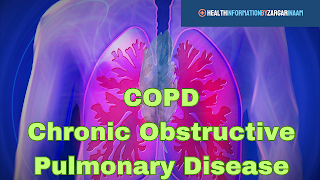Table of Contents
What is COPD?
Chronic obstructive pulmonary disease, often called COPD, is a condition in which the airways and the lungs become inflamed and narrowed, and the air sacs become damaged.
Causes of COPD
Smoking cigarettes is the most common cause of COPD. As the lungs become more damaged over time, it becomes increasingly difficult to breathe. Normally, air that we breathe passes from our nose and mouth through the airways to the tiny air sacs of the lung called alveoli. In the air sacs, oxygen passes through the walls of the air sacs into the bloodstream. Carbon dioxide passes in the reverse direction out of the bloodstream and back into the alveoli and is then eliminated breathing out. COPD is primarily caused by irritation and inflammation to the lung tissue by the following risk factors smoking, be it active or passive, air pollution, workplace dust or organic materials, and a genetic condition called alpha-1 anti-trypsin deficiency.
Pathophysiology of COPD
To keep the pathophysiology simple, COPD is caused by a variable mixture of three pathological processes loss of alveolar attachments, inflammatory obstruction of the airways, and luminal obstruction with mucous production. Over time, inflammation in the airways becomes chronic and scarring of the airways and lung tissues develop.
Stages of COPD
There are two forms of COPD, although overlap occurs, these are chronic bronchitis and emphysema.
Chronic Bronchitis
Chronic bronchitis is a cough with sputum production for at least three months in a year for two consecutive years. Productive cough is a result of bronchial inflammation. This condition is frequently seen in people who smoke cigarettes. Chronic bronchitis can scar the airways and reduce airflow. Chronic bronchitis are classically known as the blue blottis. They are overweight with the productive cough. Typically, they are sign nosed, disneak and have evidence of core pulmonale.
Emphysema
Emphysema patients are typically known as the pink puffers. Emphysema is the term used to describe damage to the air sacs in the lungs, the alveoli. This damage can also restrict airflow and cause what's called gas trapping. They are cachectic, dyspneic, and have hyper inflated lungs. They have typically what's called the barrel chest.
Tests and Diagnosis for COPD
Investigations to order for people with COPD includes a pulmonary function test to assess how well the lungs are working. Diagnosis is typically an FEV or FVC ratio less than 70 percent. FEV1 is used to calculate severity. Chest X-ray will show hyper inflated lungs. CT chest is the best modality to diagnose emphysema, ECG to look for pulmonary hypertension, and arterial blood gas to look for oxygen, carbon dioxide and bicarbonate levels.
Management of COPD
Management involves non-pharmacological and pharmacological. Non-pharmacological include being up to date with vaccination, smoking cessation, avoiding triggers, having an action plan in place, especially for acute exacerbations of COPD. Pulmonary rehabilitation can also be beneficial. For N-stage COPD, oxygen therapy at home can also be used.
Pharmacological management includes short acting bronchodilators and long-acting bronchodilators. You have two main classes of bronchodilators, beta two adrenergic agonists and muscarinic antagonists.
Adrenergic receptors normally when stimulated results in bronchodilation, allowing air to flow through the bronchus and bronchioles much more easily. And so B2 agonists will promote this action. Breathing becomes easier. Muscarinic receptors, when stimulated results in bronchoconstriction, and so muscarinic antagonists prevent this from happening, and so breathing gets easier.
Treatment for COPD
Pharmacological treatment usually involve a combination of both short acting, long acting, as well as a combination of the two different classes. There's also the addition of inhaled corticosteroids and for very severe cases, theophilin.
Surgery also has a role. There's something called a bolectomy, which is removing a bulla, which is a air-filled sac in the lung. Lung volume reduction surgery and rarely a single lung transplant.
Management of acute exacerbations of COPD, investigations are important, blood tests and chest X-ray, aiming for a appropriate oxygen saturation, burst of short-acting bronchodilators, steroids, be it intravenous or oral, use antibiotics if bacterial infection is suspected as a cause of the exacerbation, and finally non-invasive ventilation.
Summary
In summary, COPD is a condition in which the airways in the lungs become inflamed and narrowed and the air sacs become damaged. Two main forms exist, emphysema and chronic bronchitis, but there is overlap. Treatment include a combination of short-acting and long-acting bronchodilators as well as inhaled corticosteroids.
You May Also Like The Science Behind the Common Cold: Viruses and Bacteria



